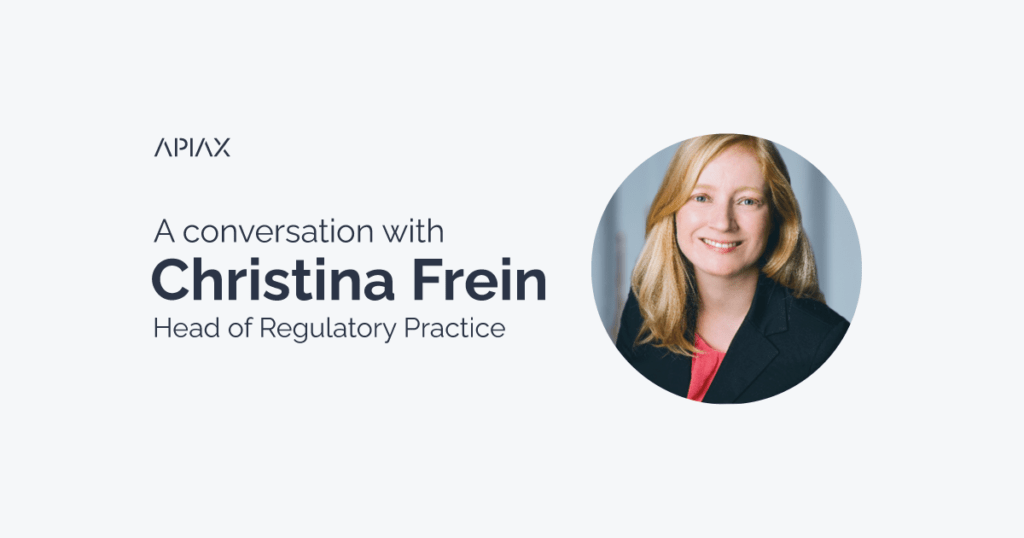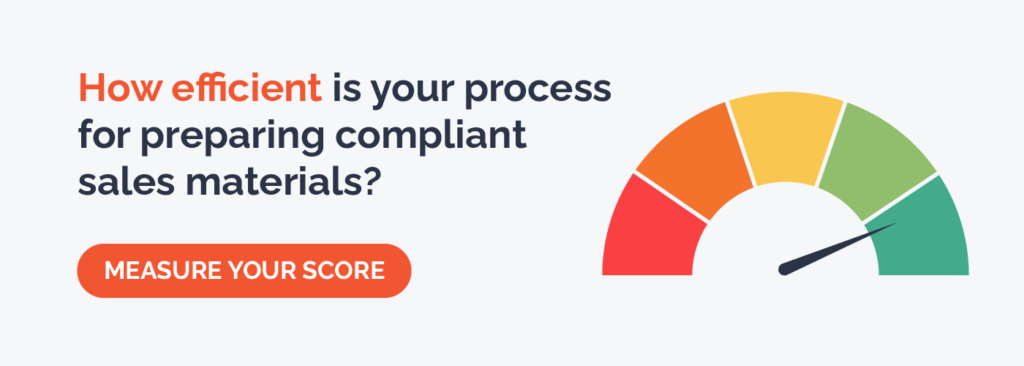
How many times has it happened that a relationship or a portfolio manager has had to create a presentation to one of their biggest clients, but had to wait for a compliance review of the materials? And how often has the review taken weeks, meaning business teams missed an opportunity or simply did not have the ideal materials to present?
More often than expected, financial institutions lose out on opportunities because of the time needed to prepare and review regulatory requirements on sales materials, such as pitch books, slide decks, and product fact sheets. As simple as it is to add a disclaimer or a footnote, to know exactly what to include for each client scenario and material is an effort that cannot be covered in a reasonable amount of time.
In addition to being complex, regulatory requirements are usually maintained by legal and compliance teams in lengthy excel spreadsheets, PDF handbooks, or online policies. This forces sales managers to manually extract the required details—such as accurate and up-to-date disclaimers—over and over again. This can result in both the business and the legal teams losing hours, if not days, because of it.
At Apiax, we have a different way of helping our clients cut the time of preparing sales materials and reduce regulatory risks when putting offers together, as Christina Frein, Head of Regulatory Practice at Apiax, explains.
Christina, why did Apiax build a solution for relationship and portfolio managers to get sales materials ready faster?
There’s no doubt that creating presentations, pitch books, and even product fact sheets is a very time-consuming step of the servicing process for relationship and portfolio managers. Although necessary, we know that adding the right disclaimers and footnotes for every document takes time. It’s not only about understanding where to add them, but also making sure they are compliant. And if you’re in this industry, you know that time is precious. If a client asks to meet with you the next day to discuss some new investment opportunities, you are expected to have presentations, fact sheets, and all other relevant documents available.
However, if it takes days and sometimes even weeks for a compliance team to review all the regulatory requirements related to such materials, how are you expected to have all the documents ready for the upcoming meeting? Multiply that by the number of relationship managers, the number of activities and you have an ever-increasing bottleneck.

What are the risks associated with the creation of these materials?
From a business perspective, to make sure you have compliant materials, client-facing employees would only use standardised documents. On the flip side, such standardised materials may not always meet a client’s high expectations or needs.
From a compliance perspective, portfolio and relationship managers have to manually check for updates, which is prone to error, thus delivering regulatory risks for the company. At the end of the day, this process is time-consuming, resource-consuming, and bears regulatory, reputational, and relational risks.
So how does Apiax solve this issue?
We provide verified and updated disclaimers and footnotes that can be copied and pasted directly into the necessary documents according to each client scenario and material type. Instead of endlessly searching across spreadsheets and asking compliance teams, with Apiax, disclaimers and footnotes are instantly available.
And how does the solution work?
We create digital regulatory rules that back up an application or an API, in which relationship managers can provide all the necessary information about the client situation, for example, the type of document that will be provided or where the client is from. Apiax will then flag any places that disclaimers and footnotes should be added; in what languages relationship managers must provide the documentation; the form requirements that must be met; and so on.
This crushes the time sales and compliance teams spend on making sure documents are in line with regulations. Ultimately, relationship and portfolio managers can then focus on serving their clients with tailored materials, and compliance can be assured that their business teams are following the accurate requirements and restrictions.
This solution is quite innovative and helps financial institutions speed up their processes. How challenging was it to build it, Christina?
As we deal with content from specialized legal and consultancy firms, we had to find a way to translate it into the language we need to provide an automated solution that users easily understand. When you have such specific rules for different countries, it can be challenging to see them thoroughly at first.
Gladly, we found the balance between having compliant yet easy-to-understand content. We did this by finding out, together with our content partners, what the necessary information is one must know in each situation so that our solution can provide the specific outcome.
At the end of the day, we transformed regulations into digital rule sets that can answer questions to any client scenario. And our clients can easily access this information from wherever they prefer. Either through an off-the-shelf application or by integrating the rules into their existing tools.
This is what we call “embedded compliance“, which helps relationship managers, who need a presentation reviewed in a day, to have disclaimers, footnotes, and so on, automatically and compliantly ready to be added to their documents within minutes.
How is it different from what is available today?
There are existing solutions in the market that help streamline the process, however, they only tackle parts of it. For the actual bottleneck, which is business teams not having the exact phrases for their disclaimers and footnotes available to copy and paste, there is no solution out there other than Apiax.
Relying on reviews does not speed up the process. What does is remove the reviewing step altogether and make all requirements available straight to the business teams for them to add to their presentations, pitch books, and fact sheets.

